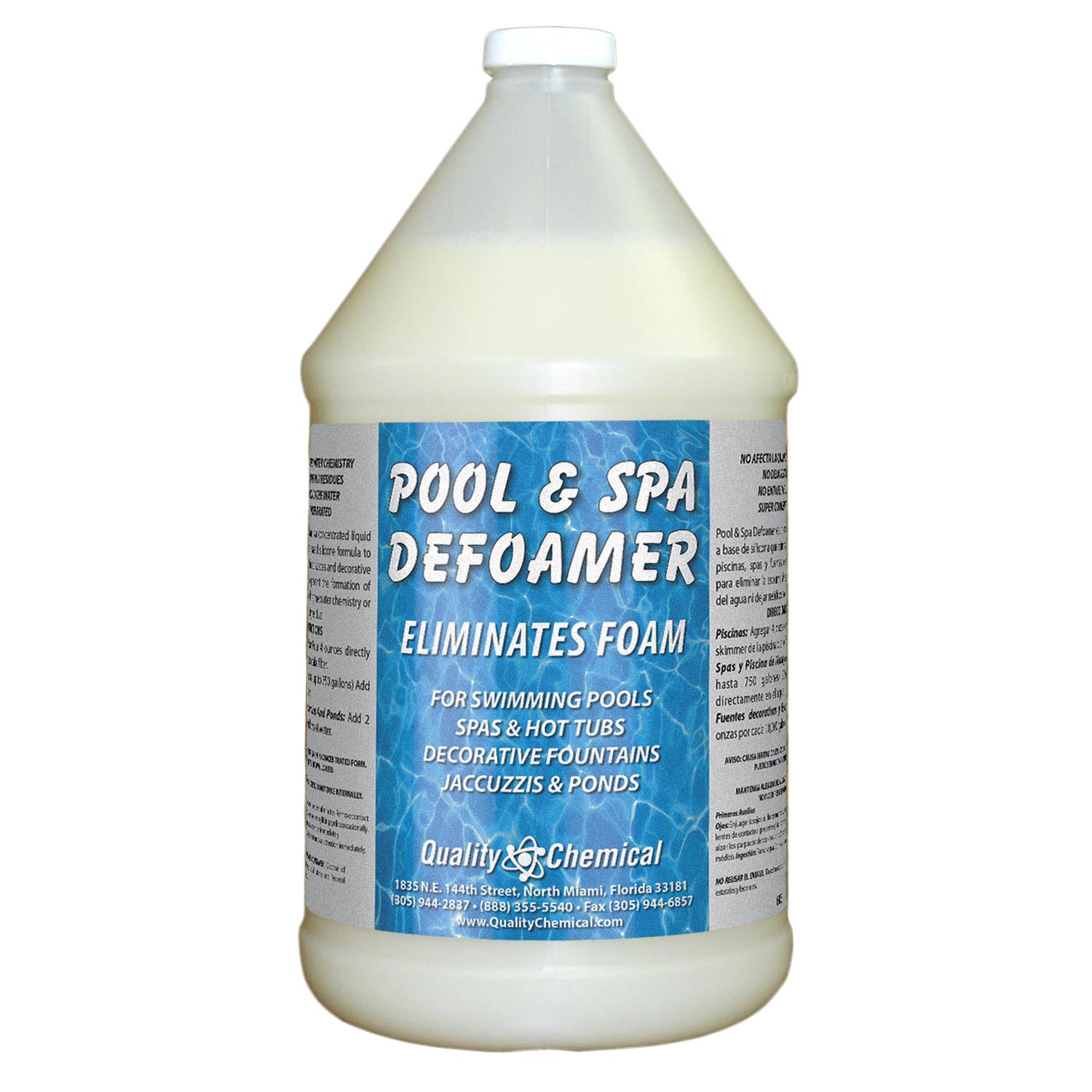The Most Reliable Ways to Use Chemical Defoamer for Best Results
The Most Reliable Ways to Use Chemical Defoamer for Best Results
Blog Article
How a Chemical Defoamer Can Enhance Effectiveness in Your Operations and Procedures
In today's affordable commercial landscape, operational efficiency is critical, and the role of a chemical defoamer can not be ignored. By resolving foam-related difficulties that disrupt processes, defoamers not just facilitate smoother procedures yet also add to cost savings and improved product quality. Their influence extends various sectors, making them a vital consideration for those wanting to maximize efficiency. Nevertheless, comprehending the details advantages and applications of defoamers raises crucial questions concerning their option and execution. What aspects should you take into consideration to maximize their efficiency in your operations?
Understanding Chemical Defoamers
Chemical defoamers play a crucial duty in different commercial processes by effectively protecting against and lowering foam development. Frothing can bring about functional inadequacies, increased manufacturing expenses, and jeopardized item quality. Defoamers are specialized chemical additives made to interfere with the stability of foam bubbles, thereby making it possible for smoother handling and boosted efficiency across several industries, consisting of food and beverage, drugs, and wastewater treatment.

These representatives usually are composed of surfactants, oils, or polymeric compounds that reduced the surface area tension of the liquid, helping with the collapse of foam. The device whereby defoamers operate often entails the destabilization of foam frameworks, enabling for quicker water drainage of liquid and the release of trapped air. Various formulations are customized to specific applications, taking into consideration elements such as compatibility with the system, temperature, and the nature of the fluid being dealt with.
Recognizing the structure and performance of chemical defoamers is necessary for selecting the ideal product for a given application. By enhancing defoamer choice based on process needs, sectors can boost functional performance, mitigate foam-related obstacles, and ultimately enhance total efficiency.
Advantages of Utilizing Defoamers
Using defoamers can substantially improve operational performance across different industries by properly alleviating foam-related concerns. The visibility of foam can disrupt processes, bring about boosted downtime, minimized productivity, and possible quality destruction in final product. Defoamers help fight these challenges by damaging down foam structures, thereby enabling smoother operations.
One of the main benefits of making use of defoamers is the reduction of waste and remodel. By reducing foam formation, defoamers enhance the uniformity of procedures, guaranteeing that products are utilized effectively. This not only decreases functional expenses however likewise adds to sustainability initiatives by minimizing source consumption.
In addition, defoamers can enhance item high quality. In manufacturing settings, too much foam can result in inconsistencies in item characteristics, affecting customer contentment. By managing foam degrees, defoamers aid maintain the preferred physical buildings of products.

Applications in Various Industries
The effectiveness of defoamers expands throughout a wide variety of sectors, where their application addresses particular foam-related challenges intrinsic to every market. In the food and drink industry, defoamers are crucial for enhancing production processes, such as brewing and milk processing, where excessive foam can hinder flow prices and lower efficiency. By decreasing foam, these agents enhance product top quality and consistency.
In the chemical production sector, defoamers are employed in procedures like paint manufacturing and wastewater therapy. Here, they protect against foam development that can disrupt mixing and separate phases, therefore boosting the total performance and performance of operations.
In pharmaceuticals, defoamers play a crucial function in the formulation of liquid drugs, making certain proper dosage and stability by regulating foam throughout mixing and storage space. (Chemical Defoamer)
Furthermore, in the farming market, defoamers are made use of in pesticide formulas to boost application effectiveness and lessen waste.
Choosing the Right Defoamer
Selecting the proper defoamer is essential for achieving ideal efficiency in various applications. The selection procedure need to begin with a thorough understanding of the certain concerns available, including the sort of foam existing, the handling conditions, and the chemical compatibility with various other formula useful site elements.
Defoamers are created from a selection of products, consisting of silicone, mineral oils, and fats. Determining the best composition is essential, as various products display varying efficiency in diverse settings. As an example, silicone-based defoamers are usually favored in high-temperature applications as a result of their stability, while natural defoamers might be better for water-based systems.
Furthermore, take into consideration the defoamer's effect on the final product. Some formulas can change the useful or aesthetic residential or commercial properties, making it critical to pick a defoamer that meets product specs without jeopardizing top quality.
Checking is one more crucial action in picking a defoamer. Small trials can provide valuable insights into the defoamer's efficiency, permitting adjustments before major execution. By thoroughly examining these elements, businesses can enhance effectiveness and make sure that the defoamer effectively satisfies their operational requirements.
Ideal Practices for Application
Executing a defoamer effectively calls for careful Website preparation and adherence to finest techniques to maximize its effectiveness. Carry out a detailed analysis of the specific application and foam features. Recognizing the type and resource of foam will certainly lead the selection of one of the most appropriate defoamer formula.
Following, develop the optimal dose (Chemical Defoamer). Begin with a small test to figure out the minimum effective focus, as extreme usage can result Source in negative impacts on item high quality or operational effectiveness
Surveillance and changing the application technique is essential; make sure that the defoamer is introduced at the best factor at the same time for maximum impact, such as throughout blending or quickly after foam formation.

Additionally, preserve clear communication with all appropriate workers to make certain consistent application methods and to share understandings on efficiency results.
Final Thought
To conclude, the use of chemical defoamers plays an essential function in enhancing operational efficiency across diverse sectors. By successfully destabilizing foam, these agents facilitate quicker drain and air release, thereby minimizing disturbances and lowering prices. The strategic application of defoamers not just improves throughput however likewise makes certain constant item high quality and resource optimization. Eventually, the incorporation of defoamers into commercial processes fosters integrity and contributes to overall performance enhancement.

In the food and drink sector, defoamers are vital for optimizing manufacturing procedures, such as brewing and dairy products processing, where too much foam can prevent flow rates and decrease effectiveness. Silicone-based defoamers are frequently preferred in high-temperature applications due to their security, while organic defoamers might be more ideal for water-based systems.
Report this page